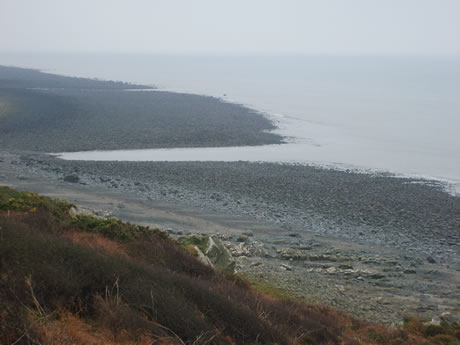Port William’s History
Man has been active on the shores around Port William for the last 6,000 years. There is evidence of a Mesolithic site to the south of the Port William signs of habitation and flints to the north. There are standing stones at Drumtroddan, just behind Port William, and cup and ring markings at Balcraig and Monreith. An Iron Age fort is sited on the headland at Barsalloch Point. There are old Christian sites at Chapel Finian and Barhobble. The Vikings have also left their mark on the countryside in some of the place names.
In the seventeenth and eighteenth centuries, smuggling was rife, due to the proximity of the Isle of Man. The main company involved in this trade was based at Clone Farm, but many of the local farms had ‘brandy holes’ – hiding places for smuggled goods – some of which are still being uncovered today when foundations are being excavated for new buildings.
Captain Francois Thurot, the French privateer, smuggler and naval officer, a protege of Madam de Pompadour, is buried at the small churchyard lying beneath the golf course at Monreith. His body was washed ashore there following a sea battle with a British fleet off the north of the Isle of Man in 1760. He had been responsible for introducing the Order of Coldin to Sweden and this order unveiled a plaque to him at the churchyard. In 1967 a detachment of the French Fleet came there to honour him.
 The picture to the side shows archaeologists working on an iron age (300BC to 300AD) roundhouse with walls some 3.5 metres thick. This is one of several in a small area just to the north of Port William and is totally different to those found in surrounding areas.
The picture to the side shows archaeologists working on an iron age (300BC to 300AD) roundhouse with walls some 3.5 metres thick. This is one of several in a small area just to the north of Port William and is totally different to those found in surrounding areas.
Similar buildings have been found in Ireland, Argyll and some Scottish islands, suggesting that this may be a group of Irish Iron Age people who settled here 1700 to 2300 years ago
Before the building of the A75 and M6, deliveries to farms and the transportation of farm produce, cattle, sheep etc was by boat.
Each coastal farm had its own “port” by clearing the rocks away so that a ship could beach at high tide, unload and reload and float off at the next high tide. Many of these are still visible a little before and after high tide and one is shown below.

Later these inlets were used by smugglers for landing brandy, tea and other high duty items brought across from the the Isle of Man, stored on the farms and then transported to the Central belt of Glasgow and Edinburgh.
More recently still the area became well known through the works of Gavin Maxwell the author whose works include ‘Ring of Bright Water’. When staying at Monreith House, his family home, he often exercised his otter on the beach below. He was born at the House of Elrig, the title of another of his works, which is situated about four miles from Port William. (To read an article on Gavin Maxwell by his nephew, Michael Maxwell from Monthreith House please click here)
During the Second World War, Oskar Kokoschka, one of the foremost artists of the twentieth century, spent some time there. Monreith House lies about a mile from Port William. This was the home of Sir Herbert Maxwell, Gavin Maxwell’s grandfather, another fine writer and water colour painter. He was a naturalist writing about the countryside, gardens, trees, fish, local history, and many other subjects. He was Lord Lieutenant of Wigtownshire for thirty two years.
